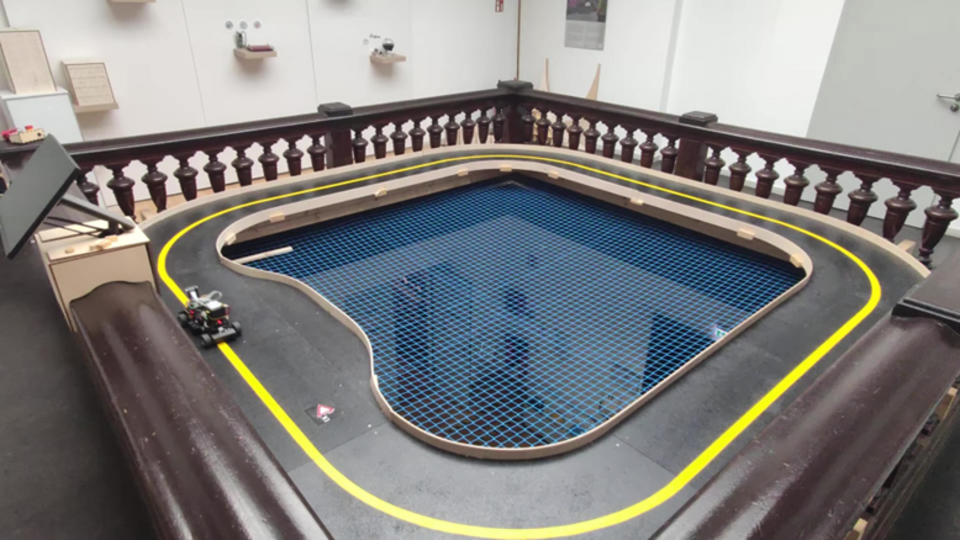How to keep vehicles on their lane

BI-members James Ashgar, Paul Auerbach and Maximilian Matthé recently published together with colleague Carrsten Knoll the paper “A Control Pipeline for Robust Lane Keeping in Model Cars”.
What is the paper about?
Reliable lane keeping describes the ability of a car to remain centered on its chosen lane. Therefore, it is fundamental for autonomous driving. The paper compares two approaches on lane keeping by using simulations and model cars. The first method is a naive implementation using a PID (proportional–integral–derivative) controller, which helps a system reach its desired value quickly and smoothly, without oversteering or understeering. The second approach is an image processing pipeline in combination with the Stanley steering controller, which was developed to control a two-axle vehicle using only the heading and the cross-track error from the path to be followed.
What was discovered specifically?
The results show that a more elaborate processing pipeline with sophisticated image processing and steering control can significantly enhance the robustness of model cars in lane keeping scenarios compared to a simple control implementation.
At low velocity the two controllers show similar behavior. At 1.75 m/s, the naive pipeline and PID controller can still control the vehicle onto the lane. If the velocity of the model car exceeds 2.0 m/s, the PID controller crashes the vehicle against the track wall. Even before reaching that speed, the naive pipeline requires supervision and manual emergency stops to avoid crashes.
In contrast, the improved pipeline and Stanley controller require no supervision until the velocity of the vehicle reaches 2.3 m/s. At higher speeds, however, the vehicle swerves on the course and never keeps the perfect track.
What are the implications for us?
With the presented Stanley controller pipeline, the model cars could reliably steer at speeds of 2.3m/s (equals approx. 8.3 km/h), which is sufficient for being able to simulate various traffic scenarios with the model platform. Therefore, the more elaborate pipeline serves as a basis for subsequent tests of e.g. overtaking or merging traffic scenarios with the employed model cars.
Where can we find out more about this?
James Asghar, Paul Auerbach, Maximilian Matthé, Carsten Knoll, A Control Pipeline for Robust Lane Keeping in Model Cars, International Conference on Control, Mechatronics and Automation, 2023.
The complete paper can be found here: https://www.barkhauseninstitut.org/fileadmin/user_upload/Publikationen/2023/2023-11_Auerbach_ControlPipelineForRobustLaneKeeping.pdf
